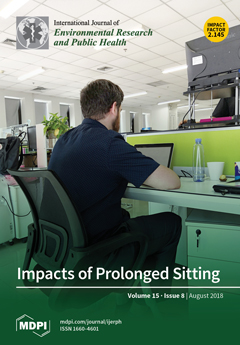1
Department of Pediatrics and Infectious Disease, Hsinchu MacKay Memorial Hospital, Hsinchu City 300, Taiwan
2
Department of Gynecology, Taoyuan General Hospital, Ministry of Health and Welfare, Taoyuan 330, Taiwan
3
Division of Urology, Department of Surgery, Taoyuan General Hospital, Ministry of Health and Welfare, Taoyuan 330, Taiwan
4
Graduate Institute of Life Sciences, National Defense Medical Center, Taipei 114, Taiwan
5
Biobank Management Center of the Tri-Service General Hospital, National Defense Medical Center, Taipei 114, Taiwan
6
Department of Pathology and Graduate Institute of Pathology and Parasitology, the Tri-Service General Hospital, National Defense Medical Center, Taipei 114, Taiwan
7
Department of Obstetrics & Gynecology, Tri-Service General Hospital, National Defense Medical Center, Taipei 114, Taiwan
8
Superintendent, Tri-Service General Hospital Penghu Branch, National Defence Medical Center, Penghu Branch, Magong City 880, Taiwan
†
These authors contributed equally to this work.
Abstract
Postpartum depression (PPD) is one of the most common examples of postnatal morbidity, but the subsequent risks of autoimmune diseases in patients with PPD have yet to be fully investigated. This nationwide population-based study utilized data of the National Health Insurance Research Database
[...] Read more.
Postpartum depression (PPD) is one of the most common examples of postnatal morbidity, but the subsequent risks of autoimmune diseases in patients with PPD have yet to be fully investigated. This nationwide population-based study utilized data of the National Health Insurance Research Database of Taiwan for the period from 1996 to 2013. In total, 45,451 women with primiparity were identified. Among them, 542 patients with PPD were enrolled as a study group while 2165 matched patients without PPD were enrolled as a control group. The demographic characteristics and comorbidities of the patients were analyzed, and Cox regression analysis was applied to calculate the hazard ratios for the risk of autoimmune diseases. Of the 2707 women enrolled in this study, 469 (17.3%) patients with newly diagnosed autoimmune diseases were identified, including 123 (22.7%) in the PPD group and 346 (16%) in the non-PPD group. After adjusting for confounding factors, it was determined that the patients with PPD had a significantly higher risk of subsequent autoimmune diseases (adjusted hazard ratio (aHR): 1.61, 95% confidence interval (CI): 1.30–1.99;
p < 0.001). Specifically, increased risks of pernicious anemia (aHR: 3.85, 95% CI: 2.06–7.22), rheumatoid arthritis (aHR: 2.62, 95% CI: 1.28–5.39), and Graves’ disease (aHR: 1.57, 95% CI: 1.05–2.33) were observed in the PPD group. This study demonstrated that patients with PPD have higher risks of subsequent autoimmune diseases, especially pernicious anemia, rheumatoid arthritis, and Graves’ disease. This useful information provides physicians with clues regarding the associations between autoimmune diseases and PPD.
Full article





